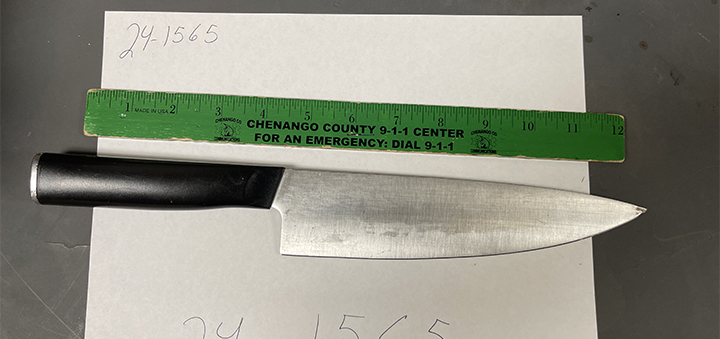Rewriting Our Disaster Playbook
Published:
February 3rd, 2014
By:
Sen. James Seward
Over the last several years, I have spent a great deal of time touring areas of my senate district to inspect flood damage. The devastation I have witnessed is tragic. Homes, business, schools, and lives left in shambles due to severe weather.
In the aftermath of the storms, I worked with my partners in state government to deliver targeted grants, appliance replacement rebate programs, and state funds to cover the local share of public disaster response and recovery costs. Even more importantly, the state has provided flood mitigation grants to help communities rebuild flood stricken areas and shore up streams and waterways to better withstand future storms. These grants will help make sure homes and businesses are protected for years to come without burdening local governments and taxpayers.
While all of these steps have been helpful, it was clear to me that more needed to be done before the next storm hits. What we really need is a comprehensive, forward-thinking plan that will help better prepare us for the severe conditions that have been striking on a more regular basis. By shoring up our infrastructure and rewriting our disaster response playbook, we can improve our ability to weather these storms – saving property, resources, and lives.
One of my top priorities for the 2014 legislative session is to address the storm preparation and recovery needs of our state. Last summer, after a wide portion of upstate New York was hit by another round of severe rainstorms and related floods, I joined with several of my senate colleagues to author a package of bills that would confront disaster response and recovery. The senate has acted swiftly, unanimously passing four of these bills.
S5931 (Seward)
The “Mohawk Valley and Niagara County Assessment Relief Act” provides a property tax reduction for those taxpayers in eligible counties whose property improvements were substantially damaged by the flooding that occurred between June 20 and August 9, 2013. To provide assessment relief, a municipality must pass a local law that adopts the provisions of the bill. A school district must pass a resolution.
S5985 (Seward)
Provides a credit equal to 2013-14 school taxes and 2014 city, village, town and county taxes on any primary residence which received substantial flood damage between June 20 and August 9, 2013. Flood victims must live in Oneida, Herkimer, Madison, Montgomery, Tompkins, Cortland, Chemung, Schuyler, Steuben or Niagara counties.
S5987 (Griffo)
It would create a supplemental fund to provide individual assistance, public assistance and hazard mitigation after a natural or man-made disaster. Aid would be available for a variety of disaster-related expenses, including home repairs and medical expenses for individuals. Municipalities would be eligible to receive funds for such items as public services expenses and debris removal. Infrastructure grants would be available to public schools.
Upon a disaster being declared, the bill would also require the Division of Homeland Security and Emergency Services to establish a field office at the disaster site and provide relief workers. The agency would also create a disaster recovery center and a toll-free phone number to help those affected apply for assistance.
In all instances, grant applicants would receive funds within one month. Loan applicants would receive aid within two months. To ensure the maximum number of people is helped, aid and loans would not be offered to anyone provided money by their insurance company or the federal government.
S6345 (Valesky)
Establishes the Upstate Flood Mitigation Task Force, a nine-member body comprised of experts in hydrology, civil engineering, climatology, emergency management and soil and water conservation. The group would conduct an in-depth examination of environments and economies that could be negatively impacted by flooding, the cost impact of flooding over the last five years and any procedures in place for flood response.
It would also create an upstate flood mitigation grant program, which would use available federal and state funds to offer grants to prevent and mitigate flood damage.
Author: Sen. James Seward - More From This Author
Comments





(1).jpg)

